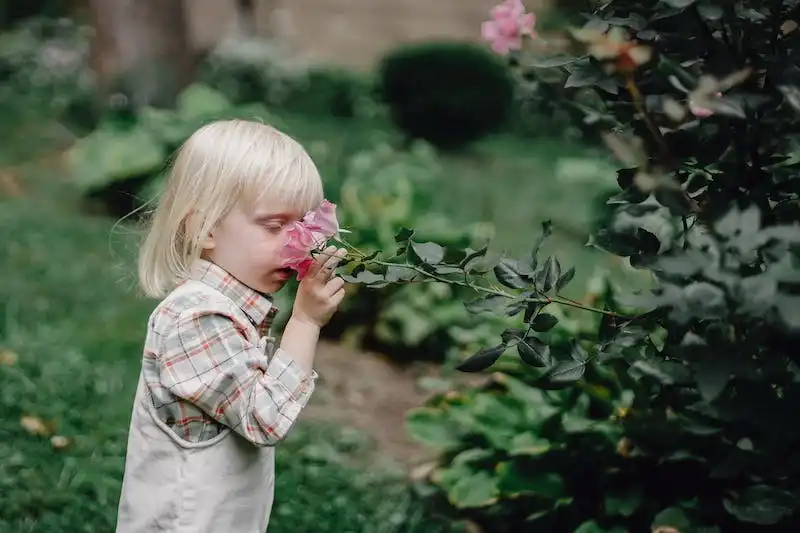When it comes to gardening, one type of plant that often comes to mind is the yucca. These hardy, drought-tolerant plants are known for their sword-like leaves, towering height, and stunning blooms. Yuccas can be found in many different varieties, each with their own unique characteristics and care needs.
One popular yucca specimen is the Yucca brevifolia, commonly known as the Joshua tree. This giant yucca tree can reach heights of up to 40 feet and is typically found in the arid desert regions of the Southwest. It has a thick trunk and branching structure, which makes it a highly sought-after plant for landscaping and gardens.
Yuccas are known for their ability to thrive in dry, well-drained soils and can tolerate both extreme heat and cold. In fact, they are often considered one of the best plants for growing in arid regions with hot summers and cold winters. Yuccas can be grown from seeds, but they can also be propagated by using the offshoots that sprout from the base of the plant.
When it comes to care, yuccas do not require much attention. They are low-maintenance plants that are highly resistant to insects and diseases. Yuccas can go for long periods without water and prefer a drier soil. It is important to avoid overwatering, as this can lead to root rot.
Yuccas are known for their flowering period, which typically occurs in late spring or early summer. During this time, the plant will produce tall, bell-shaped flowers that are often white or cream-colored. These flowers are highly attractive to pollinators, such as bees and butterflies, and provide a source of food for them.
In conclusion, yuccas are a type of plant that is highly valued for their hardiness, unique appearance, and stunning flowers. Whether you are looking to add a touch of desert beauty to your garden or want a low-maintenance plant that can withstand harsh conditions, yuccas are an excellent choice.
Joshua Tree Plant
The Joshua Tree, scientifically known as Yucca brevifolia, is a giant plant that can grow to a height of up to 40 feet. This iconic tree is native to the deserts of southwestern North America, including the Mojave Desert and Joshua Tree National Park. It is well-adapted to the harsh desert environment and can survive in extremely high temperatures and low humidity levels.
Joshua Trees are long-lived and can live for hundreds of years. They have a unique, outstretched growth pattern with distinctive branches and spiky leaves. The tree gets its name from the Mormons who crossed the Mojave Desert in the mid-1800s. They thought the tree’s shape resembled the biblical figure Joshua, with its arms outstretched in prayer.
Joshua Trees produce flowers that are creamy white and bell-shaped. These flowers attract pollinators such as moths and other insects. The tree relies on the yucca moth for pollination, as the moth lays its eggs in the tree’s flowers, and in return, the moths help the tree reproduce by carrying pollen from one tree to another.
Joshua Trees are well-suited to growing in a variety of soils, including acidic soils and desert sands. They are also resistant to drought and require minimal water once established. However, young Joshua Trees require more frequent watering, especially during their first few years of life.
When it comes to the care of Joshua Trees, they don’t require much maintenance. They are relatively low-maintenance plants that thrive in well-drained soil and full sun. A monthly watering and occasional fertilization during the growing season is usually sufficient. However, during the coldest winter months, when temperatures drop below freezing, it is important to protect the tree from frost and provide additional water.
Joshua Trees can be grown from seeds, but they have a relatively low germination rate. It is often easier to start young Joshua Trees from small plants or nursery-grown specimens. Repotting and potting up the tree is typically done annually to provide it with fresh soil and adequate space for root growth.
The Joshua Tree is an important part of the natural woodland and desert ecosystems. It provides habitat and food for a variety of wildlife, including birds, animals, and insects. The tree’s fruit is an important food source for desert-dwelling animals, and its seeds are dispersed by animals that eat the fruit and then excrete the seeds in a different location.
In conclusion, the Joshua Tree is a unique and iconic plant native to the desert regions of southwestern North America. It is well-adapted to survive in the harsh desert environment and has a fascinating relationship with moths for pollination. With proper care and maintenance, the Joshua Tree can be a stunning addition to any garden or landscape.
Joshua Tree
Joshua Tree is a unique type of plant that is native to the desert regions of the southwestern United States. It belongs to the yucca family and is characterized by its giant branching trunk and its green, spiky leaves. The Joshua Tree is sometimes referred to as the “Tree of Life” because it provides habitat and resources for many types of insects, birds, and mammals.
The Joshua Tree is well adapted to the harsh desert environment. It can withstand high temperatures, low humidity, and little rainfall. The tree has deep roots that allow it to absorb water from deep in the soil, and its leaves are covered in a thick protective layer that helps prevent water loss through transpiration.
The Joshua Tree blooms in late spring to early summer, producing clusters of creamy white flowers that attract moths and bees. These insects are responsible for pollinating the flowers and helping the tree reproduce. In the fall, the tree produces large seed pods that contain hundreds of seeds. These seeds are dispersed by the wind, allowing new Joshua Trees to sprout and grow in different areas.
In order to grow Joshua Trees, it is best to plant them in well-drained soil with plenty of sunlight. They require little watering, especially during the hot summers. Young Joshua Trees should be protected from extreme cold temperatures and frost by covering them with blankets or using a small greenhouse. Once mature, Joshua Trees are hardy and can withstand freezing winters.
When it comes to fertilizing Joshua Trees, it is best to select a fertilizer that is specifically designed for desert plants. Joshua Trees do not require a lot of fertilizer, but a small amount can help promote healthy growth. It is recommended to fertilize the tree once in the spring and again in the fall, using a slow-release fertilizer. Be careful not to over-fertilize, as this can cause the tree to become weak and susceptible to disease.
To maintain the shape of a Joshua Tree, some pruning may be necessary. Pruning can help remove dead or damaged branches and promote new growth. It is important to prune the tree during the dormant season, typically in late fall or early winter. Avoid pruning during the spring or summer, as this can interfere with the tree’s flowering and fruit production.
In conclusion, the Joshua Tree is a fascinating plant that is well-adapted to the desert environment. Its unique appearance and ability to survive in extreme conditions make it a special part of the desert ecosystem. Whether in its natural habitat or in a cultivated garden, the Joshua Tree is sure to be a beautiful and intriguing addition.
Joshua Trees
Joshua Trees (Yucca brevifolia) are a unique type of giant yuccae that grow in the desert woodland of the Mojave Desert. They can reach a mature height of up to 40 feet and have slender, branching stalks with a crown of sharp, pointy leaves at the top.
These trees are not actually trees, but a type of succulent shrub. They are known for their iconic, twisted trunks and their ability to survive extreme desert conditions. Joshua Trees thrive in high temperatures and low humidity, making the desert their natural habitat.
In the summer, when the temperatures are high and the sun is intense, the Joshua Trees enter a dormant phase. They conserve water by closing their leaf stomata and reducing transpiration. This allows them to survive the scorching summers with limited water availability.
Joshua Trees are highly adapted to the desert environment. They have a shallow root system that spreads out to cover a large area in search of moisture. Their roots absorb water from deep within the soil and store it in their thick, fleshy leaves and trunk.
The small, bell-shaped flowers of Joshua Trees only bloom once in their lifetime, usually during the coldest winter months. The flowers are pollinated by yucca moths, which are the only insects capable of reaching the nectar deep inside the flowers. The moths then lay their eggs in the flowers, providing food for the caterpillars once they hatch.
Joshua Trees are best grown from young plants. They can be propagated from seeds or by removing small offsets from the base of mature plants. The seeds should be planted in a well-draining potting soil and kept moist until they start sprouting. Young Joshua Trees require annual repotting and fertilization to promote healthy growth.
When caring for Joshua Trees, it is important to mimic their natural habitat as much as possible. They prefer a sandy, acidic soil that drains well. They should be placed in a sunny location with plenty of light. Watering should be done sparingly, allowing the soil to dry out between each watering. During the winter months, watering should be reduced even further to mimic the dry conditions of the desert.
Joshua Trees are low-maintenance plants, requiring little attention once established. They are generally pest-free, but can occasionally suffer from infestations of common insects such as aphids or scale. These can be controlled with insecticidal soap or neem oil.
In conclusion, Joshua Trees are unique and fascinating plants that have adapted to thrive in the harsh desert environment. Their ability to survive in extreme conditions makes them a symbol of resilience. If you think they would make an interesting addition to your garden, make sure to provide them with the care they need to flourish.




